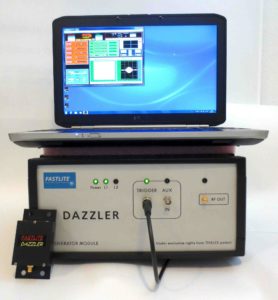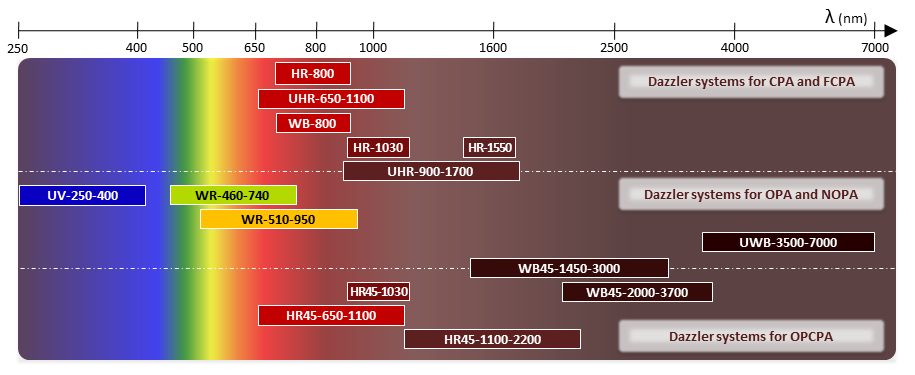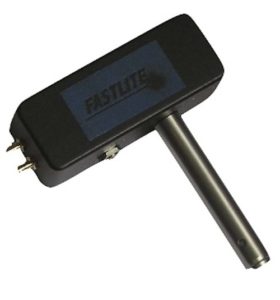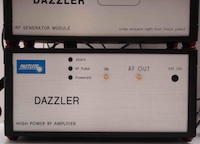
Dazzler
Ultrafast pulse shaper
Dazzlers (or AOPDF) products are turn-key ultrafast pulse shaping systems, performing simultaneous and independent spectral phase and amplitude programming of ultrafast laser pulses.
With over 500 systems installed worldwide, the Dazzler is the reference tool for your pulse shaping applications.
Invented and patented by Pierre Tournois, the AOPDF (for Acousto-Optic Programmable Dispersive Filter) relies on a longitudinal interaction between a polychromatic acoustic wave and a polychromatic optical wave in the bulk of a birefringent crystal.
Optical signals in the hundreds of Terahertz range are then controlled by RF signals in the tens of Megahertz range.
The spectral phase control is as accurate as the material properties of the crystal are known, without any assumption or hypothesis, thus allowing users to fully trust the shaping characteristics. The Dazzler phase control is obtained through the control of group delays versus wavelength.
The interaction between an optical wave and an acoustic wave also prevents the user from spectral phase discontinuities inherent to pulse shaper based on pixelated modulators.
Unlike other ultrafast pulse shapers relying on 4-f lines to spatially disperse the spectral components, the Dazzler does not require a complex optical set up. The Dazzler crystal is the only component inserted in your setup, and installation is performed in only few minutes.
Moreover, due to the physics of the acousto-optic interaction, the Dazzler system only requires a single point calibration to achieve accurate results.
| Dazzler systems are fully integrated, turn-key pulse shapers.
Each Dazzler system includes: Thanks to its advanced software functionalities, the complete system can be controlled by an external user program written in any language, thus enabling the creation of rapid feedback loop-based experiments. |
 |
Dazzler systems can be inserted inside a CPA system to pre-compensate gain narrowing and to compensate high order phase distortions, thus enabling the generation of shorter and cleaner ultrafast pulses.
Inserted between the oscillator and the amplifier, or between 2 amplifiers, Dazzler systems are compatible with all types of laser systems with repetition rate up to 30kHz. (For higher repetition rates, please click here)
The combination of the Dazzler pulse shaping capabilities with the Wizzler high dynamic range measurement provides the most powerful compression optimization tool. Some feedback loop experimental data are shown here.
The Dazzler’s ability to generate a phase-locked delayed pulse pair from a single input pulse, and to rapidly scan the delay and relative phase between these 2 pulses with constant throughput versus delay, makes it the ideal tool for 2D spectroscopy experiments.
Simply placed after a NOPA or OPA system, the Dazzler model can be selected to operate from UV to MIR.
CEP stabilization loop combining the Dazzler and the Fringeezz, have already achieved record CEP stability values for amplified laser systems.
When equiped with the CEP modulation option, the Dazzler is compatible with single-shot, dispersion-free CEP control up to 30kHz.
OPCPA systems delivering ultra-broadband pulses strongly benefit from the Dazzler performances for high order phase compensation and control of the pulse duration during amplification. Preserving the highly critical pump/seed synchronization, thanks to its jitter-free option, the Dazzler is the ultimate tool for compression optimization and CEP stabilization of these 3rd generation femtosecond laser sources.

Several options are available to increase Dazzler performances and improve its integration in various experimental setups:
| Specially developed for multi-dimensional spectroscopy experiments, the streaming mode allows to simultaneously load and play over 100 000 pre-defined pulse shapes at repetition rates up to 500Hz.
A typical use of this option is to scan the delay between 2 pulses, combined with multi-step phase cycling. This option also provides additional synchronization outputs for easy interfacing with a mechanical delay stage and the detection device. |
 |
| This additional electronic box allows to modulate and control the CE Phase of the optical pulse at repetition rates up to 30kHz, without changing dispersion.
For single-shot and high bandwidth CEP stabilization loop of amplifiers, or interferometer stabilization. |
 |
| Mandatory for CEP sensitive experiments.
This option locks the internal MHz clock of the Dazzler electronics with the MHz clock of the ultrafast oscillator. |
 |
| As diffraction efficiency is inversely proportional with the bandwidth, and proportional with the applied RF power, Fastlite has developed a series of High-Power RF amplifiers to ensure the maximum diffraction efficiency for octave-spanning laser pulses.
20W (in the same Dazzler generator box) and 50W (in an additional box) amplifiers, are available. |
 |

